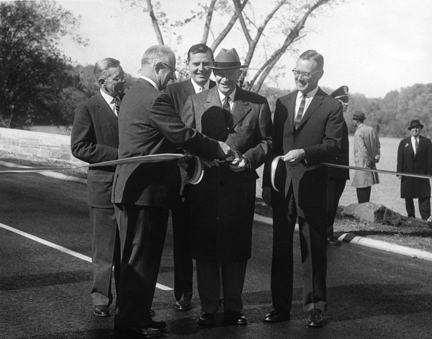Dwight D. Eisenhower, the 34th President of the United States, is widely recognized for his leadership during World War II and Cold War diplomatic efforts. However, one of his most enduring legacies lies in transforming American infrastructure with the creation of the Interstate Highway System. This ambitious project was more than just a network of roads; it was an economic catalyst, a symbol of progress, and a transformative force that revolutionized transportation in America.
Historical Context
In the early 1950s, as America emerged from the post-war era, the need for an efficient national highway system became increasingly evident. The existing road infrastructure was inadequate to support the nation’s growing population and its expanding economy. Recognizing the expanse of the problem, Eisenhower drew inspiration from Germany’s autobahn system, which he had encountered during his time as Supreme Allied Commander in Europe.
Planning and Implementation
Eisenhower recognized that an efficient highway system would not only facilitate military mobility but also enhance economic growth, national unity, and promote cultural exchange. He signed the Federal-Aid Highway Act of 1956, thus authorizing the construction of the Interstate Highway System, which would span around 42,500 miles across the nation. This act marked the beginning of a groundbreaking endeavor that would transform the face of America.
Impact on the Economy
The Interstate Highway System revolutionized the American economy. It provided a reliable and efficient transportation network, linking rural and urban areas, facilitating trade, and enabling the movement of goods and services at an unprecedented pace. The ease of travel and accessibility fostered by the interstate system sparked the development of new businesses, hotels, restaurants, and gas stations. It also created jobs and stimulated economic growth in countless communities along the highways.
Social and Cultural Implications
Beyond its economic impact, the Interstate Highway System transformed American society. It served as a catalyst for suburbanization, as people could easily commute to cities while residing in the quieter suburbs. Through increased mobility and connectivity, it also facilitated cultural exchange, allowing Americans to explore different regions, experience diverse cultures, and promote national unity.
Challenges and Criticisms
While the Interstate Highway System brought numerous benefits, it was not without its challenges and criticisms. Some argued that the construction disrupted existing neighborhoods and natural habitats, leading to urban decay and environmental concerns. Others questioned its impact on mass transit systems, as emphasis shifted from rail and public transportation to personal vehicles. Despite these criticisms, it is undeniable that the system played a pivotal role in reshaping the American landscape.
Legacy and Future Development
Today, the Interstate Highway System continues to be an integral part of American life. As it approaches its 70th anniversary, efforts are underway to maintain and modernize this crucial infrastructure. Upgrades include widening lanes, accommodating electric vehicles, enhancing safety measures, and integrating smart technologies. Additionally, discussions continue around expanding the reach of the interstate system to address changing transportation needs and challenges in an ever-evolving society.
Dwight D. Eisenhower’s vision and leadership paved the way for the creation of the Interstate Highway System, a transformative project that revolutionized transportation in America. This vast network of roads not only connected communities and fueled economic growth but also symbolized progress and unity. As we reflect on the past and look towards the future, it is clear that Eisenhower’s legacy will endure, continuing to shape America’s transportation infrastructure for generations to come.
